Find Help
More Items From Ergsy search
-

History of the Church of England
Relevance: 100%
-

A History of The Church of England
Relevance: 98%
-
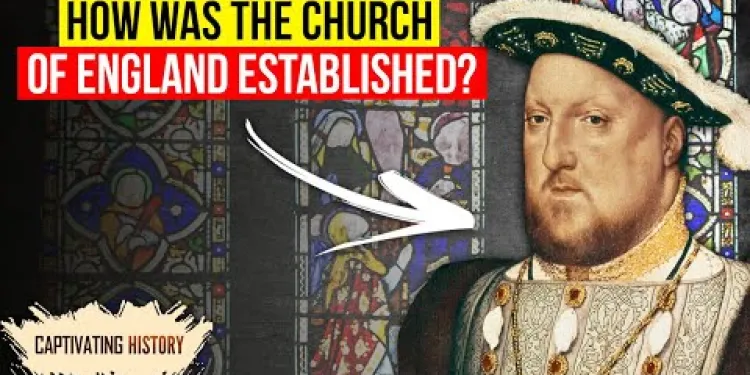
How Was the Church of England Established
Relevance: 73%
-
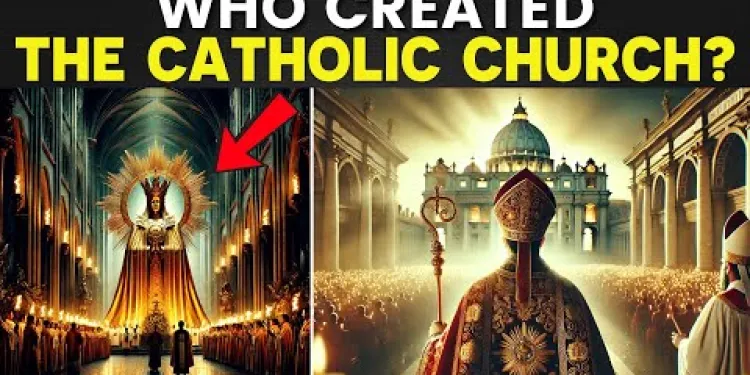
The True History of the Catholic Church That No One Told You
Relevance: 62%
-

The history of the Baptist Church and Anabaptist: The Good The Bad and the Ugly
Relevance: 60%
-

New endometriosis pill approved on NHS in England
Relevance: 25%
-
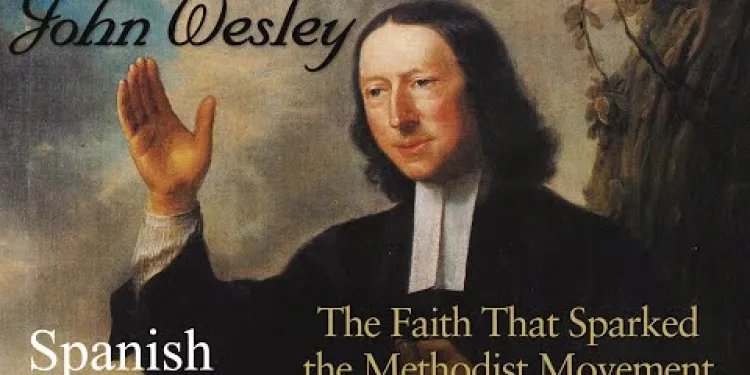
John Wesley: Faith That Sparked the Methodist Movement | Full Movie
Relevance: 25%
-
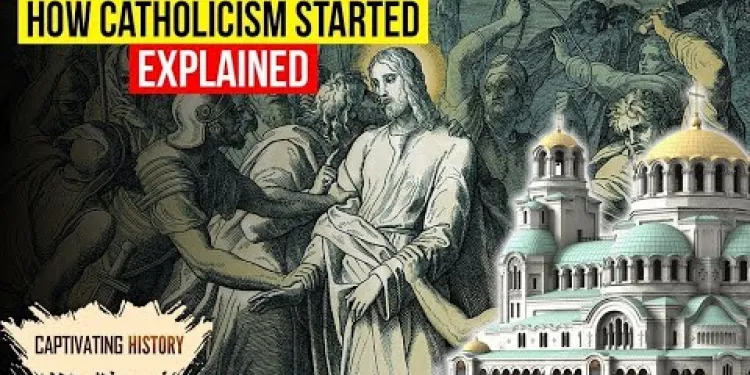
How Did Catholicism Start?
Relevance: 24%
-

Divorce UK (England and Wales) | UK Divorce Process and Overview Explained PART 1 | BlackBeltBarrister
Relevance: 22%
-

Origin of Judaism - A Brief History | 5 MINUTES
Relevance: 22%
-

Can I access my Council Tax payment history online?
Relevance: 22%
-

History of Islam in Brief | 5 Minutes
Relevance: 21%
-
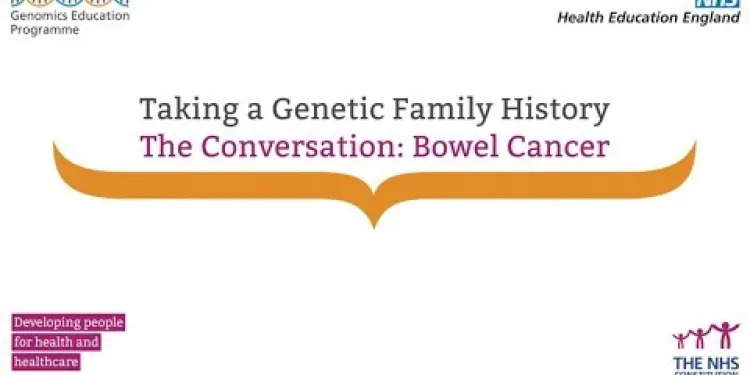
Taking a Genetic Family History - The Conversation (Bowel Cancer)
Relevance: 21%
-

Why is blood donation history important in preventing disease transmission?
Relevance: 21%
-
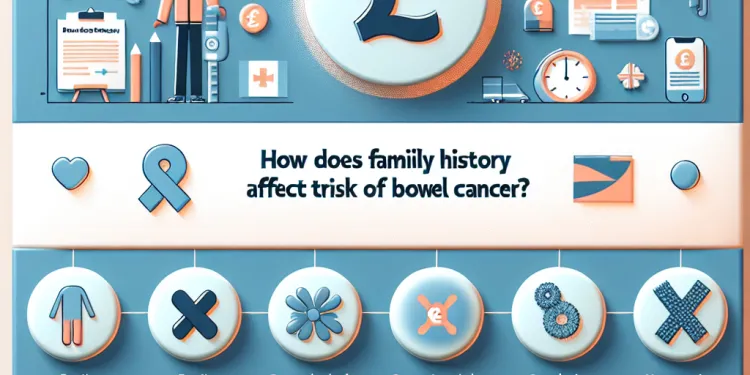
How does family history affect the risk of bowel cancer?
Relevance: 20%
-

John Wesley: Faith That Sparked the Methodist Movement | Full Movie
Relevance: 20%
-

Should people with a family history of colorectal cancer take aspirin?
Relevance: 20%
-

How to represent yourself in family court in England and Wales
Relevance: 20%
-

Do I need a background in history to work at the National Trust?
Relevance: 18%
-

What if there is no food bank near me?
Relevance: 13%
-

Why do interest rates rise and fall?
Relevance: 12%
-

What is the current threshold for Stamp Duty in the UK?
Relevance: 10%
-

Traditional Ground Burials
Relevance: 10%
-

How can I find a food bank near me?
Relevance: 10%
-

What does the disbandment of NHSE mean for me?
Relevance: 10%
-

What is an SVR and how does it relate to interest rate changes?
Relevance: 10%
-

How can older adults find local hobby groups?
Relevance: 9%
-

Is Zika virus present in the UK?
Relevance: 9%
-

What historical event is the bubonic plague known for?
Relevance: 9%
-

What is the difference between a food bank and a food pantry?
Relevance: 8%
-

What is a tracker mortgage and how does it respond to interest rate changes?
Relevance: 8%
-

How do can I find out if I have overpaid my UK Council Tax?
Relevance: 8%
-

Will the increase in the National Living Wage affect inflation?
Relevance: 8%
-

How common is bowel cancer?
Relevance: 8%
-

Who regulates the performance and compliance of UK water companies?
Relevance: 8%
-

What regions of the UK are most affected by mosquito-borne diseases?
Relevance: 7%
-

What should I tell my healthcare provider before starting Wegovy?
Relevance: 7%
-

How do interest rate changes affect my mortgage payments?
Relevance: 7%
-

How does council tax relate to wealth in the UK?
Relevance: 7%
-

Will a cashback credit card help improve my credit score?
Relevance: 7%
History of the Church of England
Origins and Early Development
The Church of England traces its roots to the early Christian communities in the Roman province of Britain. Christianity was introduced to Britain during the Roman occupation, but it was not until the mission of St. Augustine in 597 AD, sent by Pope Gregory the Great, that the Church began to organize more formally under the authority of the papacy. Augustine became the first Archbishop of Canterbury, establishing a foundation for Christianity in England.
Reformation and Independence
The 16th century brought significant changes with the English Reformation. The catalyst was King Henry VIII's desire to annul his marriage to Catherine of Aragon. The Pope's refusal led Henry to break away from the Roman Catholic Church. In 1534, the Act of Supremacy declared Henry the Supreme Head of the Church of England, marking its official separation from the papacy. This paved the way for religious reform and the establishment of a church that aligned more closely with reformed Protestant ideas.
Tudor and Stuart Influence
Following Henry VIII, the Church of England underwent further transformations. Under Henry's son, Edward VI, the Church embraced more Protestant reforms, introducing the Book of Common Prayer. However, Queen Mary I attempted to restore Roman Catholicism, leading to a period of persecution against Protestants. Her successor, Elizabeth I, reinstated Protestantism and established a middle path with the Elizabethan Religious Settlement, creating a distinct Anglican identity.
The English Civil War and Restoration
The 17th century saw tensions rise as religious conflicts intertwined with political power struggles. The Church of England found itself at odds with Puritan reformers and royalists, culminating in the English Civil War. Following the execution of Charles I, the monarchy was abolished, and Oliver Cromwell’s Commonwealth promoted non-conformist traditions. The monarchy and the Church were restored with Charles II in 1660, reinstating Anglican primacy.
Modern Era and Global Role
In the modern era, the Church of England has undergone significant changes to address contemporary issues. It remains the established church of England, playing a role in national ceremonies and maintaining a presence in public life. The church has also engaged in global mission work throughout the British Empire, leading to the worldwide Anglican Communion. Over the last few decades, it has grappled with debates around inclusivity, ordaining women priests and bishops, and addressing societal changes.
The Church of England’s history is deeply entwined with the history of England itself, reflecting the nation’s religious, political, and cultural transformations across centuries.
History of the Church of England
Where the Church Came From
The Church of England started a long time ago when the Romans were in Britain. People began to learn about Christianity during this time. In the year 597 AD, a man named St. Augustine came to Britain. He was sent by the Pope, who was the leader of the church. Augustine helped organize the Church in England, and he became the first Archbishop of Canterbury. This was an important start for Christianity in England.
Big Changes in the Church
In the 16th century, the Church of England changed a lot. King Henry VIII wanted to end his marriage to Catherine of Aragon, but the Pope said no. So, Henry decided to make a new church separate from the Pope. In 1534, a new law made Henry the boss of the Church of England. This started a new kind of church with different ideas.
Changes Under Different Rulers
After Henry VIII, the Church of England kept changing. His son, Edward VI, made the church more Protestant. This means it was different from the Roman Catholic Church. Then, Queen Mary I wanted things to go back to the old ways and be more Catholic. Later, Queen Elizabeth I made a compromise. She created a way for the Church to have its own unique identity.
War and Changes Again
In the 17th century, there were many fights about religion and power. Some people wanted the Church to change more, while others wanted it to stay the same. This caused the English Civil War. King Charles I was executed, and the monarchy was removed for a while. Oliver Cromwell, who was in charge, liked a different way of worship. In 1660, King Charles II brought back the monarchy and the Anglican Church.
The Church Today
Today, the Church of England has changed in many ways to deal with modern issues. It is still very important in England, taking part in national events. The Church works with others around the world in what’s called the Anglican Communion. It talks about important issues like having women as priests and bishops. The Church's history is a big part of England's own history, showing how the country has changed in religion and culture over time.
Some people find reading easier with the help of tools like audiobooks or reading apps that highlight text. These can be very helpful for understanding the Church of England’s story.
Frequently Asked Questions
What is the Church of England?
The Church of England is the primary state church in England, and it is also a member of the worldwide Anglican Communion. It considers itself both Catholic and Reformed.
When was the Church of England founded?
The Church of England was formally established in 1534 when King Henry VIII declared it independent of the Roman Catholic Church through the Act of Supremacy.
Why did King Henry VIII establish the Church of England?
Henry VIII established the Church of England largely because the Pope refused to annul his marriage to Catherine of Aragon. This led Henry to break away from the Roman Catholic Church and establish himself as the head of the Church of England.
What is the role of the Archbishop of Canterbury?
The Archbishop of Canterbury is the senior bishop and principal leader of the Church of England, as well as a symbolic leader of the worldwide Anglican Communion.
What are key events in the history of the Church of England?
Some key events include the English Reformation in the 16th century, the Elizabethan Religious Settlement, the English Civil War, and the Act of Uniformity.
How does the Church of England differ from the Roman Catholic Church?
The Church of England differs in terms of ecclesiastical structure, theology, and certain practices. It allows clergy to marry, has different sacraments, and does not regard the Pope as its leader.
What is the Elizabethan Religious Settlement?
The Elizabethan Religious Settlement was established in 1559 under Queen Elizabeth I, as a compromise that aimed to unify different religious factions within England and establish the Church of England's Protestant doctrine.
How did the English Civil War affect the Church of England?
During the English Civil War, the Church of England faced significant upheaval, including the temporary abolition of bishops. Following the war, the monarchy and the Church were restored, but the experiences had lasting impacts.
What is the Book of Common Prayer?
The Book of Common Prayer, initially published in 1549, is the liturgical text used by the Church of England. It contains the order of services and is a key document for Anglican worship.
What is the role of the Queen in the Church of England?
The reigning monarch is the Supreme Governor of the Church of England, a role primarily symbolic, affirming the establishment of the Church as part of the state.
How does the Church of England view women in ministry?
The Church of England first ordained women as priests in 1994 and consecrated its first female bishop in 2015. It encourages the ministry of women at all levels.
What is the Anglican Communion?
The Anglican Communion is a global family of churches with historical ties to the Church of England, sharing common beliefs and practices, though each church is independent.
What was the significance of the Act of Supremacy?
The Act of Supremacy in 1534 was pivotal as it recognized Henry VIII as the 'Supreme Head' of the Church of England, marking a definitive break from the authority of the Pope.
What was the Oxford Movement?
The Oxford Movement was a 19th-century initiative that aimed to reintroduce high church elements into the Church of England, emphasizing its Catholic heritage and focusing on liturgy and tradition.
How is the Church of England governed today?
The Church of England is governed by a General Synod which includes bishops, clergy, and laity. Important decisions about doctrine and practice are made through this body.
What is the Church of England?
The Church of England is a big church in England.
People go there to pray and sing songs to God.
They also have special services like weddings and christenings.
If you want, you can use pictures to help understand more about the Church.
You can also ask someone to read with you and talk about what you learn.
The Church of England is the main church in England. It is part of a big group of churches around the world called the Anglican Communion. The Church of England says it is both Catholic and Reformed.
Here are some ways to understand this better:
- Use a dictionary to look up hard words like "Catholic" and "Reformed."
- Try reading out loud to yourself or with someone else.
- Ask someone you trust to explain tricky parts.
- Look for videos or pictures about the Church of England to help you learn more.
When did the Church of England start?
The Church of England began a long time ago in the year 1534. A king named Henry VIII helped start it. He wanted to make his own church. For help with reading, you can use tools like audiobooks or ask someone to read with you.
The Church of England started in 1534. This happened when King Henry VIII said it was separate from the Roman Catholic Church. He did this with a special rule called the Act of Supremacy.
Why did King Henry VIII start the Church of England?
King Henry VIII wanted to make his own church. This is why:
- He wanted a new wife. The Pope said no to his divorce.
- He wanted to be the boss of the church in England.
- He wanted the church's money and land.
Tools to help you:
- Use pictures to remember facts.
- Listen to stories about King Henry VIII.
- Talk to others if you have questions.
Henry VIII started the Church of England. He did this because the Pope said "no" when Henry asked to end his marriage to Catherine of Aragon. So, Henry decided to leave the Roman Catholic Church and be the boss of his own church, the Church of England.
What Does the Archbishop of Canterbury Do?
The Archbishop of Canterbury is a very important person in the Church. Here are some things they do:
- They lead the Church of England.
- They help make big decisions for the Church.
- They work with other church leaders around the world.
- They help people understand the teachings of the Church.
If you want to know more, you can use pictures or videos to learn!
The Archbishop of Canterbury is the top bishop and main leader of the Church of England. He is also an important leader for Anglican churches all around the world.
What important events happened in the history of the Church of England?
Some important events are:
- The English Reformation: This happened in the 1500s. It was when England changed how people could worship.
- The Elizabethan Religious Settlement: This was a new set of rules about religion made by Queen Elizabeth.
- The English Civil War: This was a big fight in England over who should have power.
- The Act of Uniformity: This was a law about how people had to go to church in the same way.
If you find reading hard, you can try using these tools to help:
- Text to Speech: This tool reads the text out loud for you.
- Picture Helpers: Pictures can help you understand the story better.
- Reading Guides: Some apps or websites have things to help you follow along.
What is different between the Church of England and the Roman Catholic Church?
The Church of England and the Roman Catholic Church are two kinds of Christian churches. Here’s how they are different:
- Leaders: The Church of England has the King or Queen as a leader. The Roman Catholic Church has the Pope as the leader.
- Rules: The Church of England has different rules and teachings than the Roman Catholic Church.
- Services: Church services might look or sound different between the two churches.
If you want to learn more, you could:
- Look at simple books about each church.
- Ask someone who goes to one of these churches.
- Use online videos made for kids to explain the differences.
The Church of England is different in a few ways. It has its own way of doing things.
Here are some key points:
- The people who work in the church (called clergy) can get married.
- They have different special ceremonies, which are called sacraments.
- They do not follow the Pope as their leader.
Tools and methods that can help with reading:
- Use a ruler or your finger under each line of text as you read.
- Read one sentence at a time and pause to think about it.
- Listen to audiobooks for more help.
What was the Elizabethan Religious Settlement?
The Elizabethan Religious Settlement was a plan made a long time ago in England by Queen Elizabeth I. It was a way to keep peace between different religious groups, like Catholics and Protestants.
Queen Elizabeth I wanted everyone to get along and believe in God in their own way.
She made rules for churches so people from different groups could all pray there together.
To learn more, you can read books with pictures or watch videos that explain history in simple words.
The Elizabethan Religious Settlement happened in 1559 when Queen Elizabeth I was queen. It was a way to help bring peace between different religious groups in England. It also created the Church of England with Protestant ideas.
What happened to the Church of England because of the English Civil War?
The English Civil War was a fight in England a long time ago. It changed many things.
The Church of England is a big church in England.
This war made changes to the Church of England.
During the war, some people didn't want kings and queens to decide about the church. They wanted new rules.
After the war, the church had new leaders and different ideas.
Here are some things that might help you understand better:
- Read Short Stories: Look for books about the English Civil War with pictures.
- Watch Videos: Find simple videos online about the war.
- Ask Questions: Talk to a teacher or adult about it if you're curious.
During the English Civil War, big changes happened to the Church of England. The bishops were gone for a while. After the war, the king and the Church came back. But, the things that happened were remembered for a long time.
What is the Book of Common Prayer?
The Book of Common Prayer is a special book. People use it when they pray in church. It has lots of prayers inside. It helps people know what to say.
This book is used in many churches. It has been around for a long time.
If you find reading hard, you can use audiobooks or ask someone to read with you. You can also use a highlighter to mark important parts.
The Book of Common Prayer first came out in 1549. It is a special book used by the Church of England. This book tells people how to pray and have church services. It is very important for church worship.
If you find reading hard, you can ask someone to read it to you or use an app that reads out loud.
What Does the Queen Do for the Church of England?
The Queen has an important job in the Church of England. She is like a leader. She helps guide the church.
Here are some tips to help you understand:
- Read slowly and take your time.
- Ask someone to read with you.
- Use a dictionary to find out what new words mean.
The King or Queen is the leader of the Church of England. This is mostly a special title. It shows that the Church is an important part of the country.
What does the Church of England think about women who work in the church?
The Church of England started letting women become priests in 1994. The first woman became a bishop in 2015. The Church wants women to work in all parts of the church.
What is the Anglican Communion?
The Anglican Communion is a group of churches. These churches are all around the world. They are like one big family. They follow the same Christian beliefs and prayers.
Tools that can help you understand more:
- Use pictures or videos to learn more about the churches.
- Talk to someone who knows about the Anglican Communion. They can explain it in a simple way.
- Use a dictionary to find out what new words mean.
The Anglican Communion is a group of churches all around the world. They are like a big family. They have a special connection to the Church of England. They believe in the same things and do things the same way, but each church can make its own decisions.
Why was the Act of Supremacy important?
The Act of Supremacy happened in 1534. It was very important. This law said that Henry VIII was the boss of the Church of England. Before this, the Pope was in charge. Now Henry VIII was in charge instead.
What was the Oxford Movement?
The Oxford Movement started in the 1800s in England. It was a group of people in the Church of England who wanted to bring back old ways of worship.
They liked old church traditions and ceremonies. They believed these ways were very important for their faith.
Some people agreed with them, but others did not. This movement changed the Church and how people worshiped.
If you want help reading or understanding, you can:
- Ask someone to read with you.
- Use a dictionary to learn new words.
- Watch videos or listen to podcasts about history.
The Oxford Movement happened in the 1800s. It was a group that wanted to bring back special church practices to the Church of England. They wanted people to remember the Catholic history and pay attention to church services and old customs.
Who runs the Church of England today?
The Church of England is run by people called bishops, priests, and deacons. There is also a special group called the General Synod that helps make big decisions.
The Queen is the head of the Church of England, but the Archbishop of Canterbury is very important too. The Archbishop helps guide the church.
If you want to learn more, you can ask a teacher or use a computer to look it up. You can also watch videos or read books with pictures to help you understand.
The Church of England is run by a group called the General Synod. This group has bishops, church leaders, and regular church members. They make big choices about church rules and how to do things.
Useful Links
- Ergsy carfully checks the information in the videos we provide here.
- Videos shown by Youtube after a video has completed, have NOT been reviewed by ERGSY.
- To view, click the arrow in centre of video.
- Most of the videos you find here will have subtitles and/or closed captions available.
- You may need to turn these on, and choose your preferred language.
- Go to the video you'd like to watch.
- If closed captions (CC) are available, settings will be visible on the bottom right of the video player.
- To turn on Captions, click settings .
- To turn off Captions, click settings again.
More Items From Ergsy search
-

History of the Church of England
Relevance: 100%
-

A History of The Church of England
Relevance: 98%
-

How Was the Church of England Established
Relevance: 73%
-

The True History of the Catholic Church That No One Told You
Relevance: 62%
-

The history of the Baptist Church and Anabaptist: The Good The Bad and the Ugly
Relevance: 60%
-

New endometriosis pill approved on NHS in England
Relevance: 25%
-

John Wesley: Faith That Sparked the Methodist Movement | Full Movie
Relevance: 25%
-

How Did Catholicism Start?
Relevance: 24%
-

Divorce UK (England and Wales) | UK Divorce Process and Overview Explained PART 1 | BlackBeltBarrister
Relevance: 22%
-

Origin of Judaism - A Brief History | 5 MINUTES
Relevance: 22%
-

Can I access my Council Tax payment history online?
Relevance: 22%
-

History of Islam in Brief | 5 Minutes
Relevance: 21%
-

Taking a Genetic Family History - The Conversation (Bowel Cancer)
Relevance: 21%
-

Why is blood donation history important in preventing disease transmission?
Relevance: 21%
-

How does family history affect the risk of bowel cancer?
Relevance: 20%
-

John Wesley: Faith That Sparked the Methodist Movement | Full Movie
Relevance: 20%
-

Should people with a family history of colorectal cancer take aspirin?
Relevance: 20%
-

How to represent yourself in family court in England and Wales
Relevance: 20%
-

Do I need a background in history to work at the National Trust?
Relevance: 18%
-

What if there is no food bank near me?
Relevance: 13%
-

Why do interest rates rise and fall?
Relevance: 12%
-

What is the current threshold for Stamp Duty in the UK?
Relevance: 10%
-

Traditional Ground Burials
Relevance: 10%
-

How can I find a food bank near me?
Relevance: 10%
-

What does the disbandment of NHSE mean for me?
Relevance: 10%
-

What is an SVR and how does it relate to interest rate changes?
Relevance: 10%
-

How can older adults find local hobby groups?
Relevance: 9%
-

Is Zika virus present in the UK?
Relevance: 9%
-

What historical event is the bubonic plague known for?
Relevance: 9%
-

What is the difference between a food bank and a food pantry?
Relevance: 8%
-

What is a tracker mortgage and how does it respond to interest rate changes?
Relevance: 8%
-

How do can I find out if I have overpaid my UK Council Tax?
Relevance: 8%
-

Will the increase in the National Living Wage affect inflation?
Relevance: 8%
-

How common is bowel cancer?
Relevance: 8%
-

Who regulates the performance and compliance of UK water companies?
Relevance: 8%
-

What regions of the UK are most affected by mosquito-borne diseases?
Relevance: 7%
-

What should I tell my healthcare provider before starting Wegovy?
Relevance: 7%
-

How do interest rate changes affect my mortgage payments?
Relevance: 7%
-

How does council tax relate to wealth in the UK?
Relevance: 7%
-

Will a cashback credit card help improve my credit score?
Relevance: 7%


